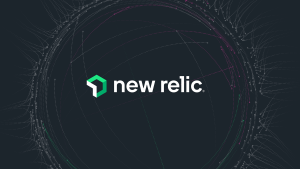In the past few years there has been a very noticeable change in the software industry specific to the delivery and integration of software. This change has been commonly referred to as “shift left.” New Relic is at the forefront of this shift and is helping to provide tools and best practices to help developers and DevOps engineers increase their productivity through a shift-left mindset.
In this blog post we’ll take a look at:
- The key factors of DevOps productivity
- How New Relic can help every developer and DevOps engineer achieve greater productivity
- Best practices of DevOps productivity
Key factors of DevOps productivity
DevOps productivity can be viewed as five different layers of a pyramid that all play a contributing role in achieving greater efficiency during each phase of the software development lifecycle (SDLC). Each layer builds upon the other and is necessary in order to achieve optimal productivity. These are the five layers:
Code quality and maintainability
Maintaining high code quality is crucial for DevOps productivity, facilitating quicker development and bug resolution. New Relic provides insights into code execution and performance, aiding developers in identifying and resolving issues efficiently. Additionally, New Relic integrated code analysis tools can enhance software quality by identifying potential issues early in the development process.
Continuous integration and continuous deployment (CI/CD) pipelines
CI/CD pipelines are integral to modern development, automating tasks and providing rapid feedback, thus enhancing DevOps productivity. Integrated observability solutions like New Relic help monitor pipeline performance by identifying bottlenecks and correlating data with application performance to optimize deployment processes effectively.
Infrastructure and system performance
Infrastructure and system performance are pivotal for DevOps productivity, requiring real-time visibility into metrics like CPU utilization and network latency to swiftly address bottlenecks and optimize system efficiency. Visualizing interdependencies among infrastructure components aids developers in pinpointing performance issues and enhancing overall system performance.
Collaboration and communication
Effective communication among development, operations teams, and stakeholders is vital for DevOps productivity, preventing duplicated efforts. New Relic is able to help facilitate collaboration by providing shared dashboards and real-time performance data, while integration with communication tools streamlines issue resolution, ensuring efficient teamwork.
Monitoring and alerting
Proactive monitoring and alerting are vital for sustaining high DevOps productivity, enabling swift issue resolution and minimizing downtime. Advanced capabilities like anomaly detection and machine-learning (ML)-based predictions empower developers to preemptively address emerging issues, ensuring system stability and enhancing productivity.
Leveraging New Relic observability solutions to improve productivity
Now that we know some of the key factors in DevOps productivity, let’s discuss some of the ways that you can leverage New Relic to improve productivity day to day.
CodeStream to shift left

Image 2.1 New Relic CodeStream
New Relic CodeStream seamlessly integrates observability data into developers' environments, enhancing issue resolution by providing insights directly within their IDEs or code editors. This in-context approach reduces the need to switch between tools, accelerating problem identification and resolution earlier in the SDLC. CodeStream promotes proactive issue identification, ultimately leading to increased productivity, faster delivery of features, and a more stable end-user experience.
Full-stack monitoring and troubleshooting
New Relic full-stack observability provides DevOps with real-time visibility into application, infrastructure, and service performance, facilitating rapid issue identification and resolution. With detailed metrics like response times, error rates, and CPU utilization, developers gain insights to optimize system performance effectively. Capabilities such as distributed tracing and service maps enable quick diagnosis of issues across microservices, streamlining troubleshooting and enhancing overall system efficiency. Furthermore, having this visibility in lower environments can help mitigate issues before you push to production.

Image 2.2 New Relic Entity Map
Proactive anomaly detection and alerting

Image 2.3 New Relic Lookout
New Relic proactive anomaly detection utilizes advanced ML algorithms to identify emerging issues, allowing developers to address them before they escalate. This early warning system minimizes downtime and ensures system stability by enabling quick investigation and resolution of issues. Customizable alerting thresholds and integration with incident management tools streamline incident response, facilitating prompt action and minimizing the time spent on issue resolution.
Synthetics and real user monitoring
Utilizing New Relic real user monitoring (RUM) alongside synthetics offers comprehensive insights into user behavior and expectations through real-user data analysis and continuous testing. RUM facilitates JavaScript errors, core web vitals, and geo-based observability in addition to session replay, which enables frontend teams to swiftly diagnose frontend issues as experienced by users, empowering developers and engineers to efficiently diagnose and remediate.
New Relic AI
New Relic AI is the observability industry’s first generative AI assistant that allows you to ask your observability data anything. With New Relic AI you can efficiently and effortlessly search through your data to find what’s on fire, where the issue is coming from, what changed, and more. Coupled with tools like New Relic CodeStream, New Relic AI gives your DevOps teams the power to reduce mean time to resolution (MTTR) by understanding errors and deployment issues, all from your IDE. This is a game changer for DevOps teams everywhere.

Image 2.4 New Relic AI
Best practices to increase DevOps productivity
The fact of the matter is that increased MTTx and decreased DevOps and developer productivity means real monetary losses for organizations everywhere. I see this regularly as a sales engineer, and my number one goal is to allow teams to do their best work the best way possible so that they don’t have to worry about fighting fires and finding the needle in the haystack. Here are three high-level best practices every organization should adopt to increase DevOps productivity:
1. Set up effective monitoring and alerting
Your observability is only as good as your alerts, and your alerts are only as good as your observability. Leveraging full-stack observability, coupled with meaningful and dialed-in alerting, is a no-fail starter to success.
2. Implementing a culture of continuous improvement

Image 3.1 Continuous Improvement
Implementing a culture of continuous improvement in software involves embracing feedback, adopting iterative development practices, and leveraging observability tools like New Relic to help you gather, analyze, and respond to insights. By fostering a culture that values collaboration, communication, and agility, organizations can continuously enhance their processes and products, ultimately leading to better software quality and business success.
3. Regularly review and refine development processes
Reviewing and refining the development process involves conducting retrospectives to assess what went well and what could be improved. Tools like New Relic help teams to analyze data and track metrics seamlessly. After retrospectives, teams align on process refinement, implementing changes to streamline workflows and improve collaboration, often guided by data-driven decisions and an observability mindset facilitated by tools like New Relic, ultimately enhancing development efficiency.
Conclusion
DevOps productivity stands as a cornerstone for business success, influencing speed to market, cost efficiency, software quality, customer satisfaction, innovation, agility, and employee engagement. New Relic observability solutions play a pivotal role in driving DevOps productivity by reducing MTTx, enhancing release velocity, and improving the SDLC. New Relic solutions can help organizations enhance developer productivity and succeed in today's fast-paced and demanding software landscape.
Próximos passos
Are you interested in leveling up you or your team’s productivity?
- First, if you haven’t already, create a free New Relic account. This gets you 100 GB/month and 1 full access user.
- Second, if you’re already a New Relic customer or a new customer, start sending change markers. This is a super easy, lightweight way to make the biggest impact on productivity.
- Third, sign up for CodeStream. It’s a free plug-in that brings observability directly into your IDE to help you find and remediate issues—and improve performance.
As opiniões expressas neste blog são de responsabilidade do autor e não refletem necessariamente as opiniões da New Relic. Todas as soluções oferecidas pelo autor são específicas do ambiente e não fazem parte das soluções comerciais ou do suporte oferecido pela New Relic. Junte-se a nós exclusivamente no Explorers Hub ( discuss.newrelic.com ) para perguntas e suporte relacionados a esta postagem do blog. Este blog pode conter links para conteúdo de sites de terceiros. Ao fornecer esses links, a New Relic não adota, garante, aprova ou endossa as informações, visualizações ou produtos disponíveis em tais sites.



